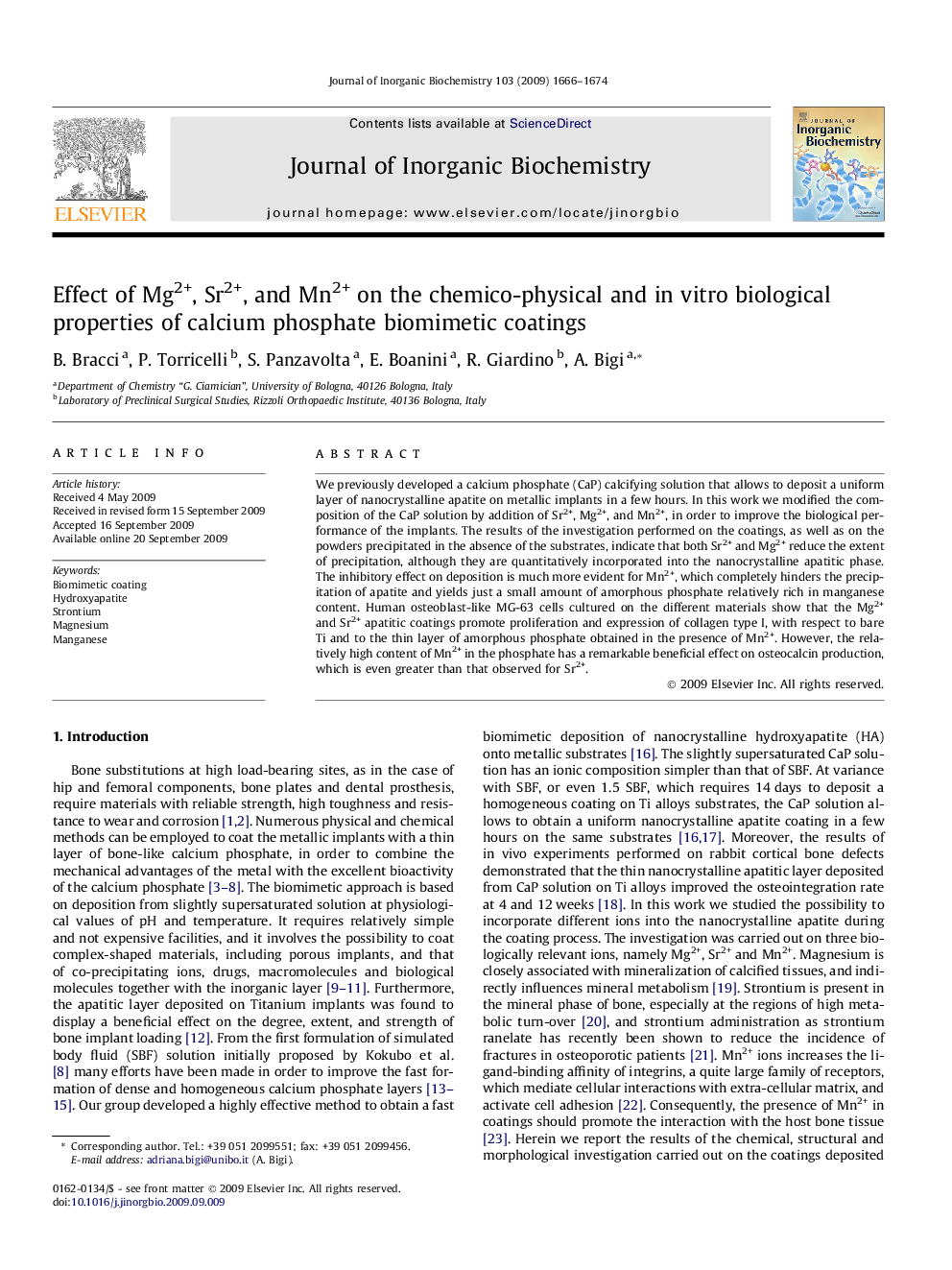| Article ID | Journal | Published Year | Pages | File Type |
|---|---|---|---|---|
| 1316215 | Journal of Inorganic Biochemistry | 2009 | 9 Pages |
We previously developed a calcium phosphate (CaP) calcifying solution that allows to deposit a uniform layer of nanocrystalline apatite on metallic implants in a few hours. In this work we modified the composition of the CaP solution by addition of Sr2+, Mg2+, and Mn2+, in order to improve the biological performance of the implants. The results of the investigation performed on the coatings, as well as on the powders precipitated in the absence of the substrates, indicate that both Sr2+ and Mg2+ reduce the extent of precipitation, although they are quantitatively incorporated into the nanocrystalline apatitic phase. The inhibitory effect on deposition is much more evident for Mn2+, which completely hinders the precipitation of apatite and yields just a small amount of amorphous phosphate relatively rich in manganese content. Human osteoblast-like MG-63 cells cultured on the different materials show that the Mg2+ and Sr2+ apatitic coatings promote proliferation and expression of collagen type I, with respect to bare Ti and to the thin layer of amorphous phosphate obtained in the presence of Mn2+. However, the relatively high content of Mn2+ in the phosphate has a remarkable beneficial effect on osteocalcin production, which is even greater than that observed for Sr2+.
